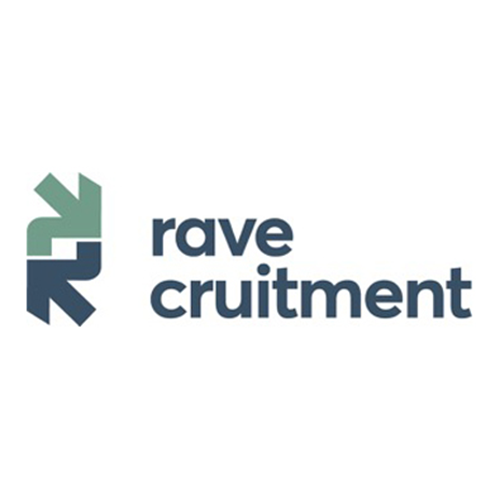
Are happy employees really the key to retention in the current labor market? Within 2 years, the goal Jacco Vingerling set for himself at the end of 2022 was to make employees 10% happier. With insights from sociologist and ‘happiness professor’ Ruut Veenhoven, he developed a happiness trajectory for his staff at the technical staffing agency Bowers & Jackling. By, among other things, weekly measuring the happiness scores of his employees, he investigates how he can improve their overall life satisfaction. At least half of the employees participate in the trajectory, both internal staff and those on assignment.
Since the start of the happiness trajectory, turnover has decreased by 22%.
An interim measurement at the end of 2023 revealed that the happiness level among participants had increased by 5% since late 2022, keeping Vingerling nicely on schedule. Notably, staff turnover within Bowers & Jackling also dropped by 22% during the same period. According to Vingerling, this is a direct consequence of the happiness trajectory. “Happy employees are important for the overall productivity and performance of the company,” he explains. “Employees feel more valued and engaged with the organization, resulting in a more positive working environment and a greater sense of camaraderie.”
Key to Retention
Having only happy employees, that’s probably every employer’s dream. Happy employees are not only more loyal, but they are also more creative and resilient, thus better able to face challenges and contribute to the growth of an organization, Vingerling states. “I strongly believe in involving employees in decision-making and giving them the space to make their own choices. This creates a flat organizational structure with minimal hierarchy and short communication lines, encouraging employees to discover and strengthen their talents.”
“We notice that staff on assignment now less frequently switch over to the client.”
And this helps in the competitive labor market of today. He not only sees this reflected in the figures but also in the feedback from his staff. “As a staffing agency, it’s common to experience clients wishing to hire assigned staff after a project. However, we’ve noticed that assigned staff are less likely to switch to the client and instead stay with us.”
Even Beyond Work Life
What’s notable about the happiness trajectory at Bowers & Jackling is that it extends even to the employees’ home lives. “We’ve been able to significantly assist people in their lives, beyond the workplace,” he says. “For instance, 40 employees participated in our compensated blood analysis, after which we were able to provide them with the right supplements. Additionally, we offer coaching to at least 10 employees in areas not directly related to work, ranging from dealing with aggression in domestic environments to managing financial issues at home and finding a new partner.”
“40 employees participated in a compensated blood analysis, after which we were able to provide them with the right supplements.”
Even assistance with dating? “Yes, some employees have taken advantage of this.” And financial worries were indeed addressed. “Based on the happiness measurement, we discuss the results in personal conversations. We see where there is the greatest potential for improvement and gauge how the employee feels about solutions such as coaching. If the research indicates that someone, for example, experiences a lot of stress due to financial worries, we can offer help. We connected an employee stressed by financial pressure with a budget coach, at the company’s expense.”
Not Good with Lactose and Gluten
The blood analyses showed, among other things, that many employees had vitamin deficiencies and that stress is measurable in the blood. “Additionally, it turned out that about 70% of those we tested have a gluten or wheat intolerance, 55% are lactose intolerant, and 50% have an intolerance to sugar, without experiencing any complaints. These individuals are prescribed supplements by external experts and receive dietary advice.”
Thanks to the supplements and advice, participants have already noticed significant differences in their energy levels, Vingerling observes. “They feel fresher and wake up more energized.” Vingerling first conducted these tests on himself to see what they would yield. “I found out through blood tests that I don’t react well to gluten and lactose. Lactose, in particular, caused me migraines. Now that I know this, I’ve been able to address it and no longer suffer from migraine complaints.”
Lesson Learned
Showing interest in employees’ personal lives is a hurdle that many employers still find too high, Vingerling observes in practice. Yet, he would definitely recommend it. “In times like these, you should consider breaking down the traditional boundaries between work and personal life and explore how you can support employees on a personal level, with mutual trust as the foundation.” Has he also taken a learning point from a year of the happiness trajectory? “A further personalization could make the trajectory even more valuable. Not everything works for everyone, and we’re increasingly realizing that every employee is unique.”
“In times like these, you should consider breaking down the traditional boundaries between work and personal life.”
The ultimate goal? “Of course, a staff turnover rate of 0 percent would be nice, but that’s not the ultimate goal. Our aim is to provide every employee at Bowers & Jackling insight into their happiness and to make them measurably happier, that’s what we strive for.” And does the trajectory also help in finding new happy employees? “We certainly mention this in our job postings, on the website, and in the interview process. We also notice that it’s becoming more widely known, but it remains exceptional for people to truly understand the trajectory. Especially how far we go in this regard.”
If you liked this article and want more insights on attracting and retaining the best talent in Europe, subscribe to ToTalent’s weekly newsletter. You’ll get exclusive content, events, and expert insights.











